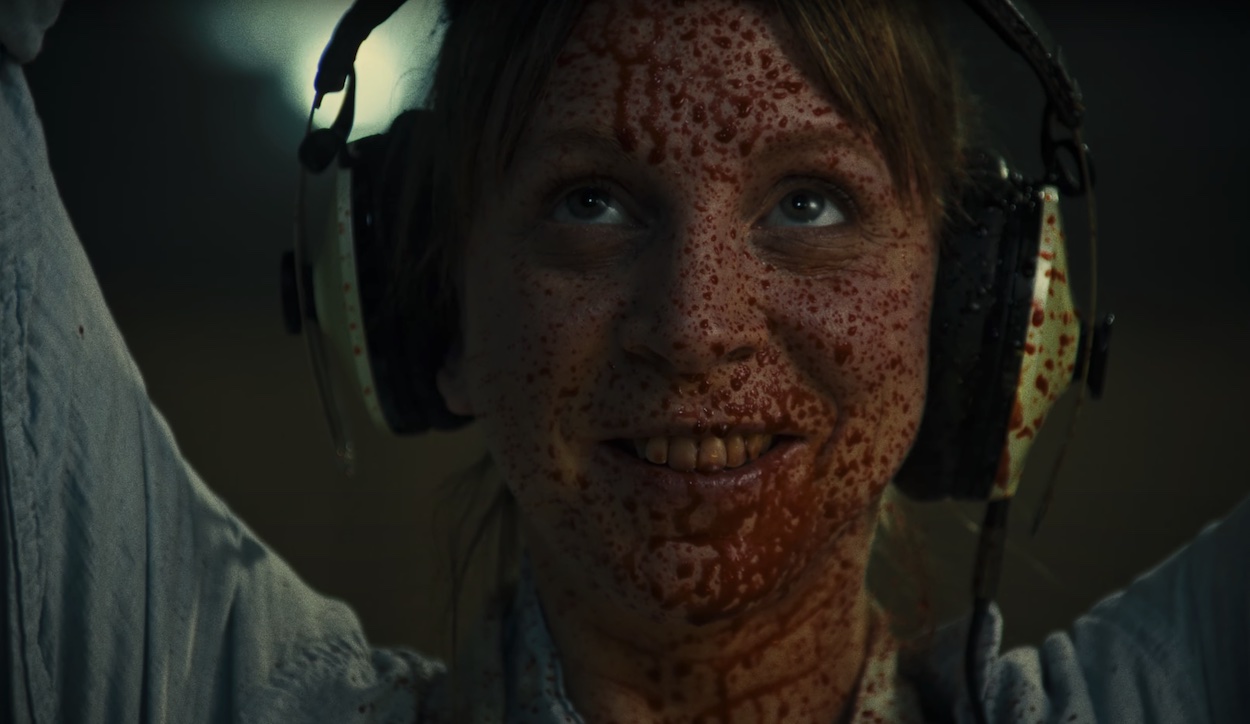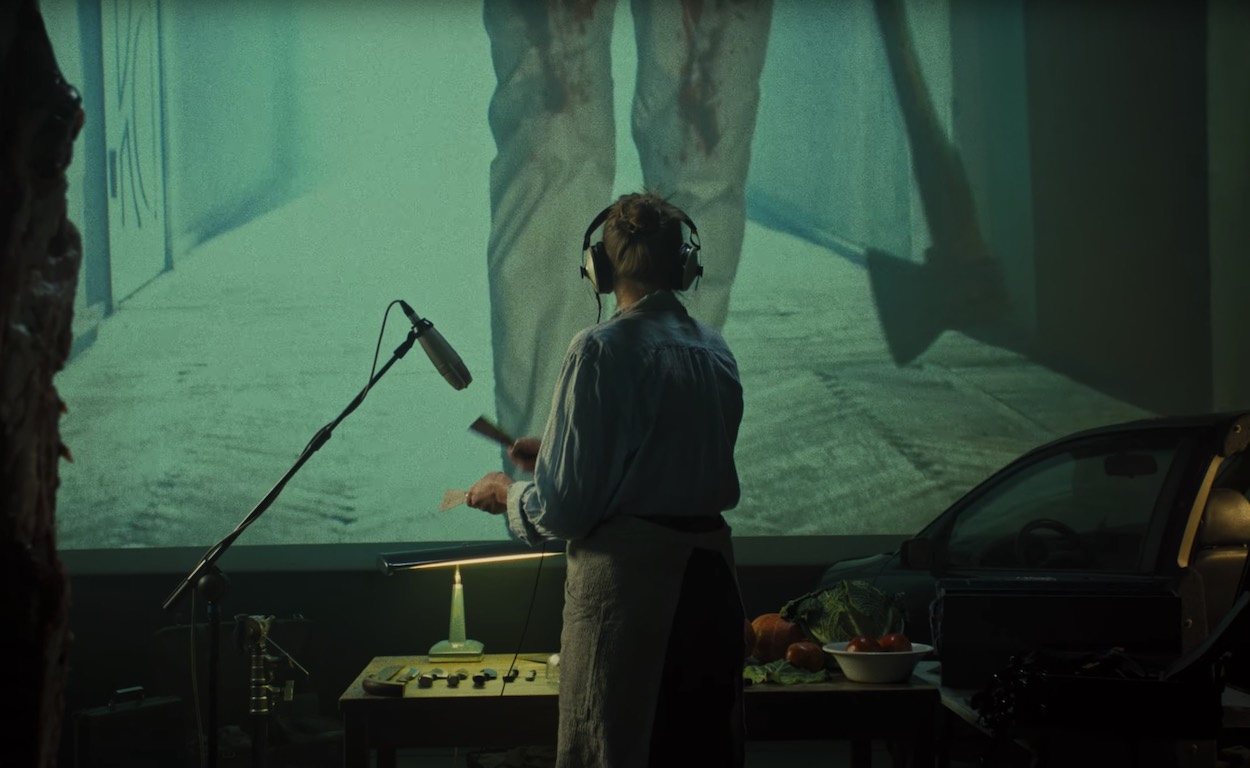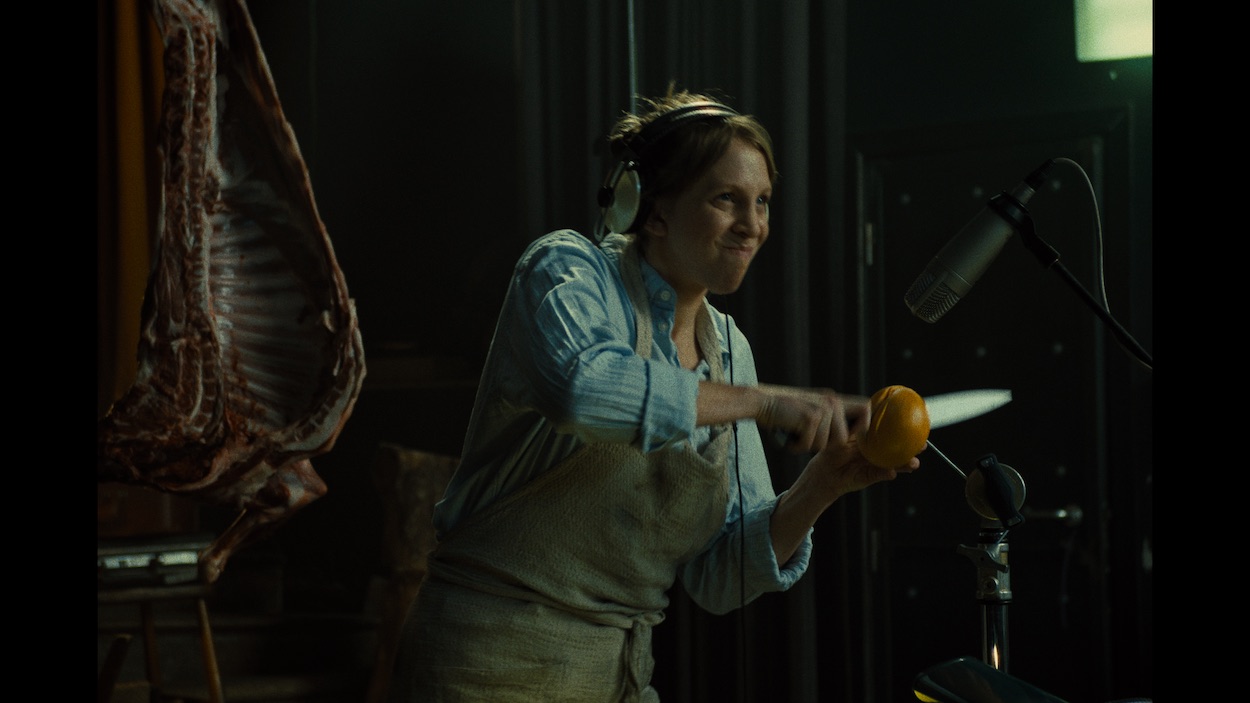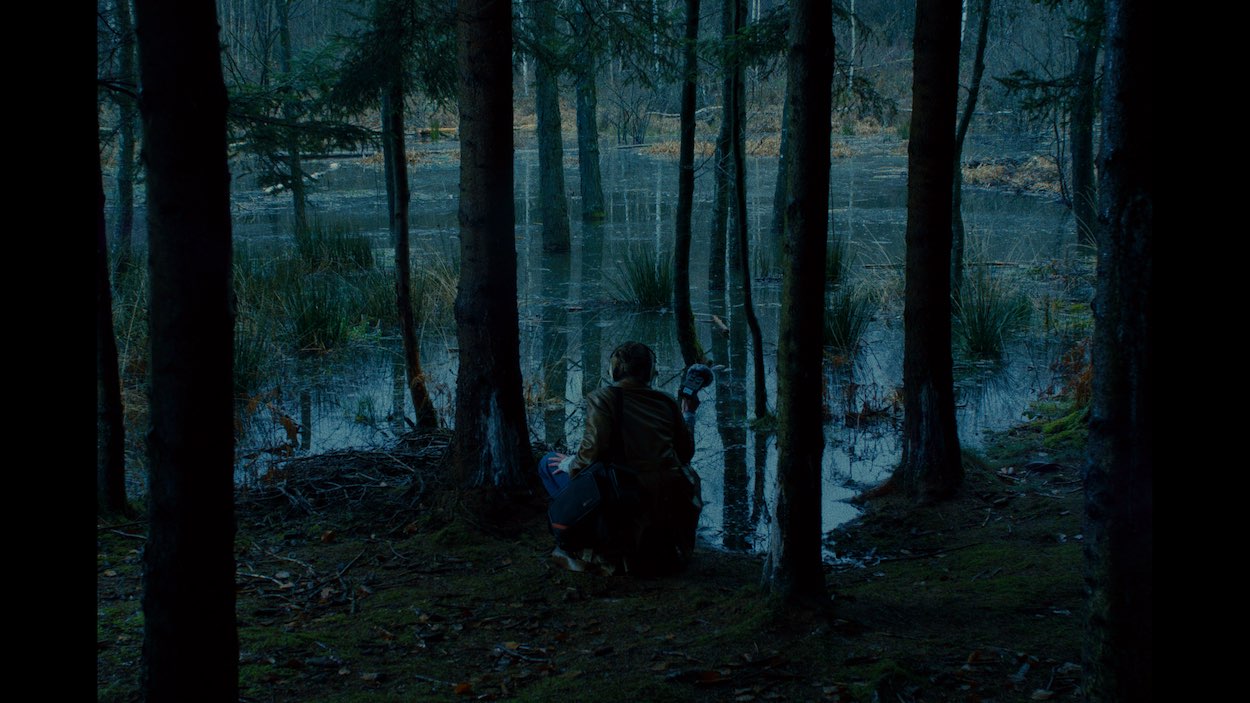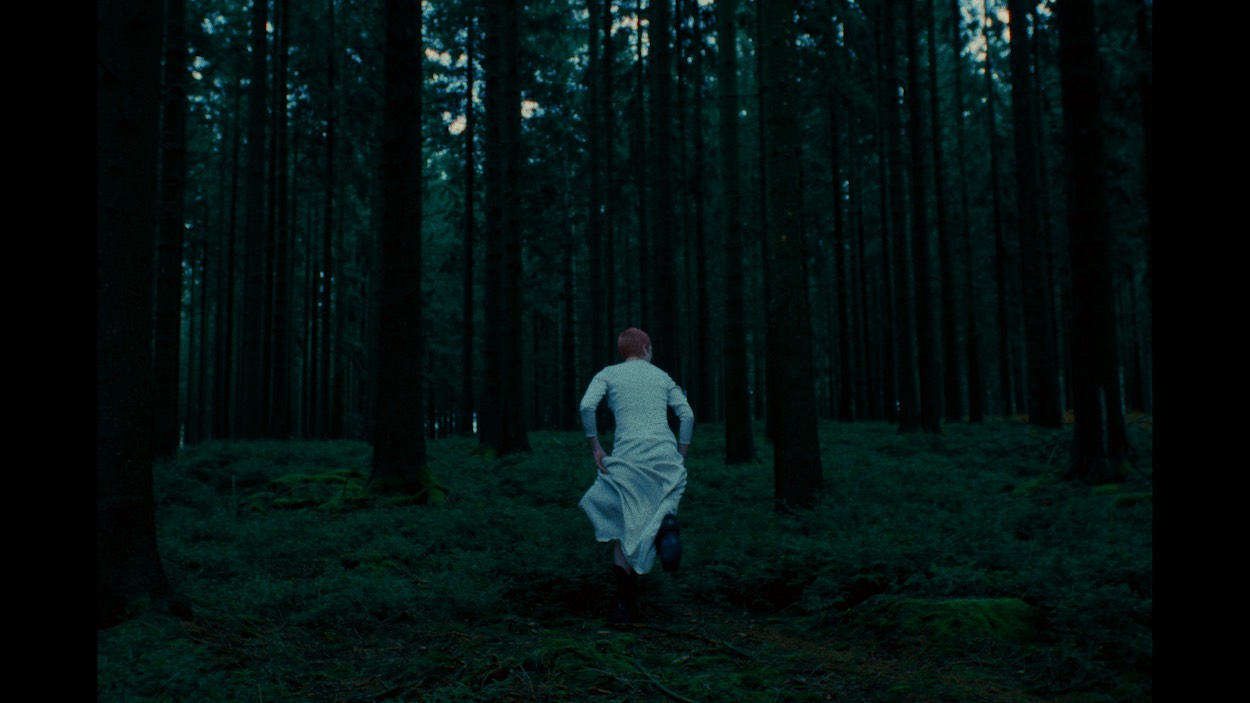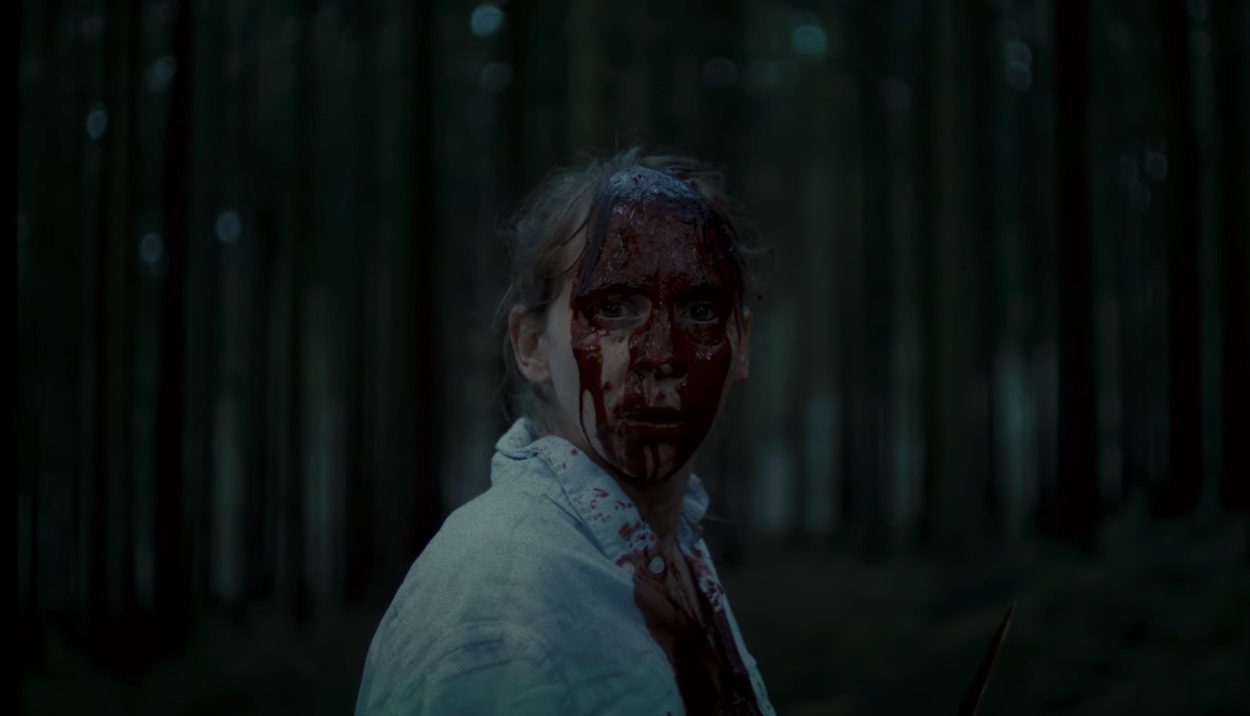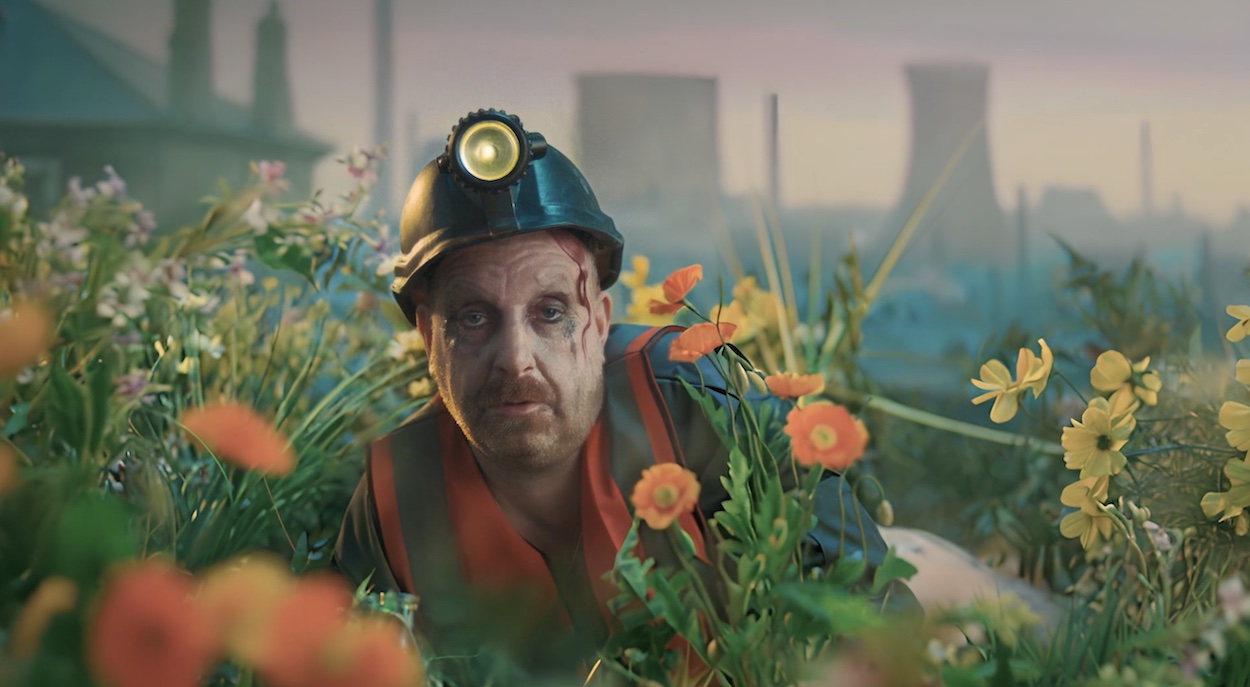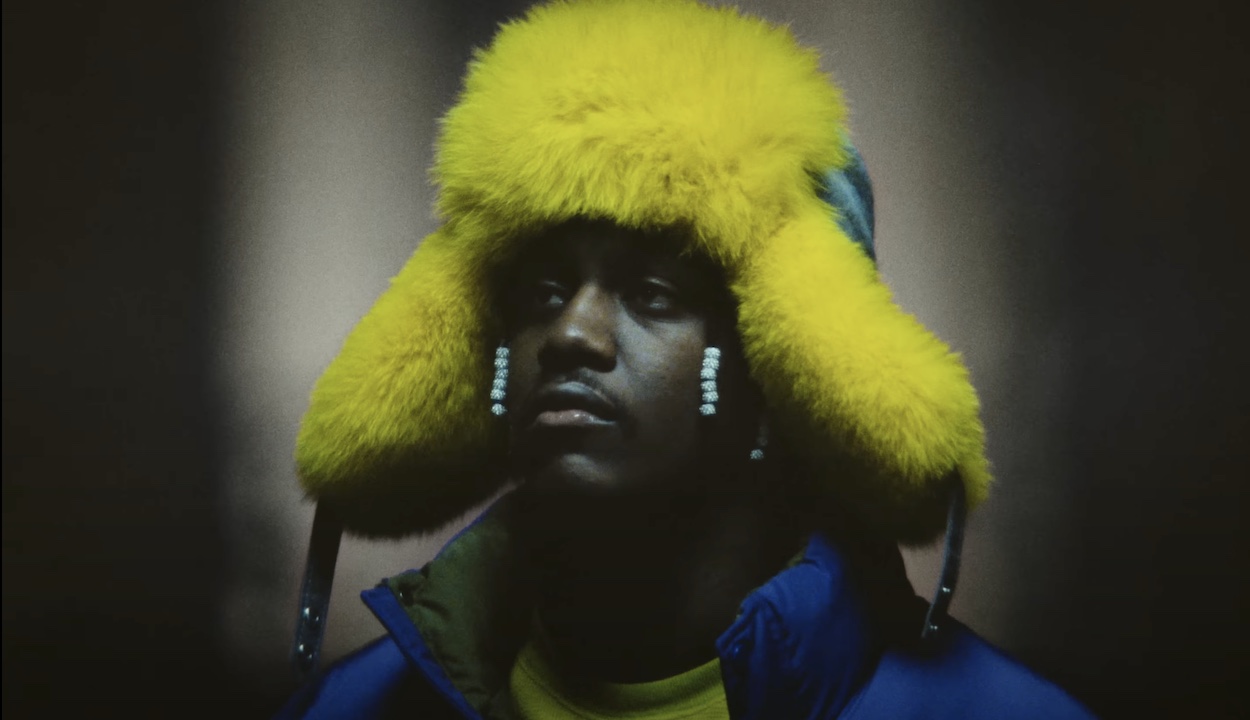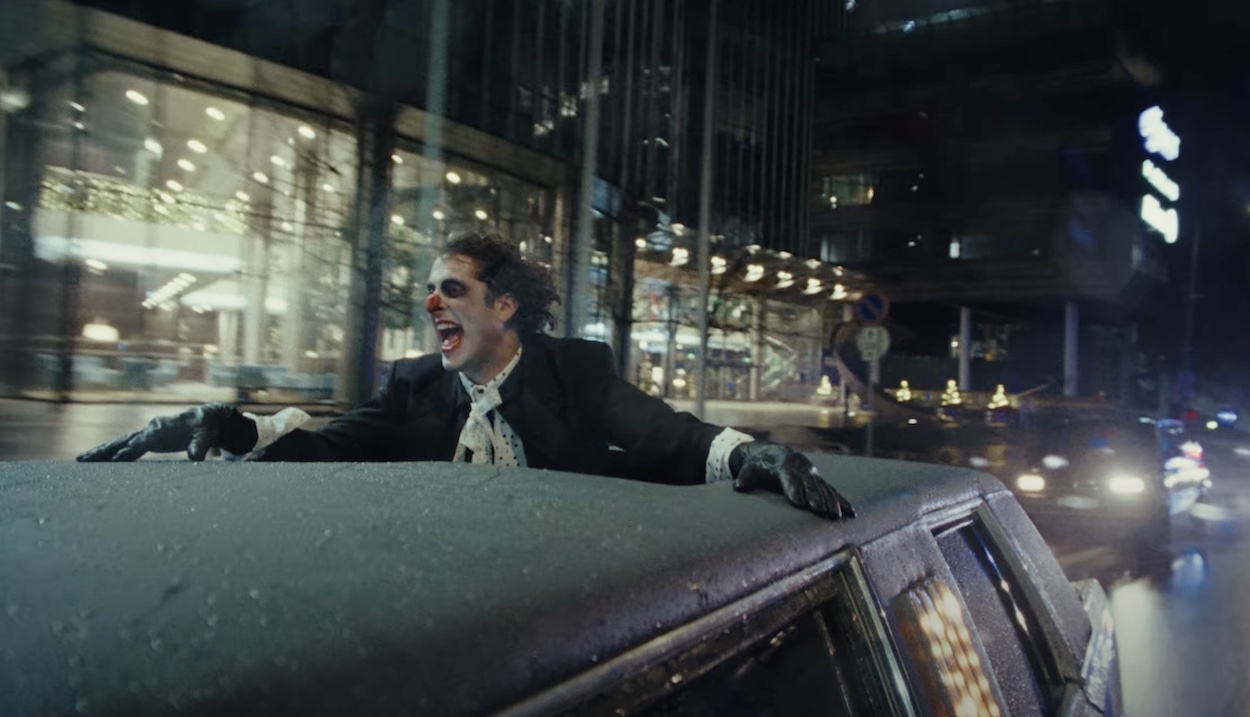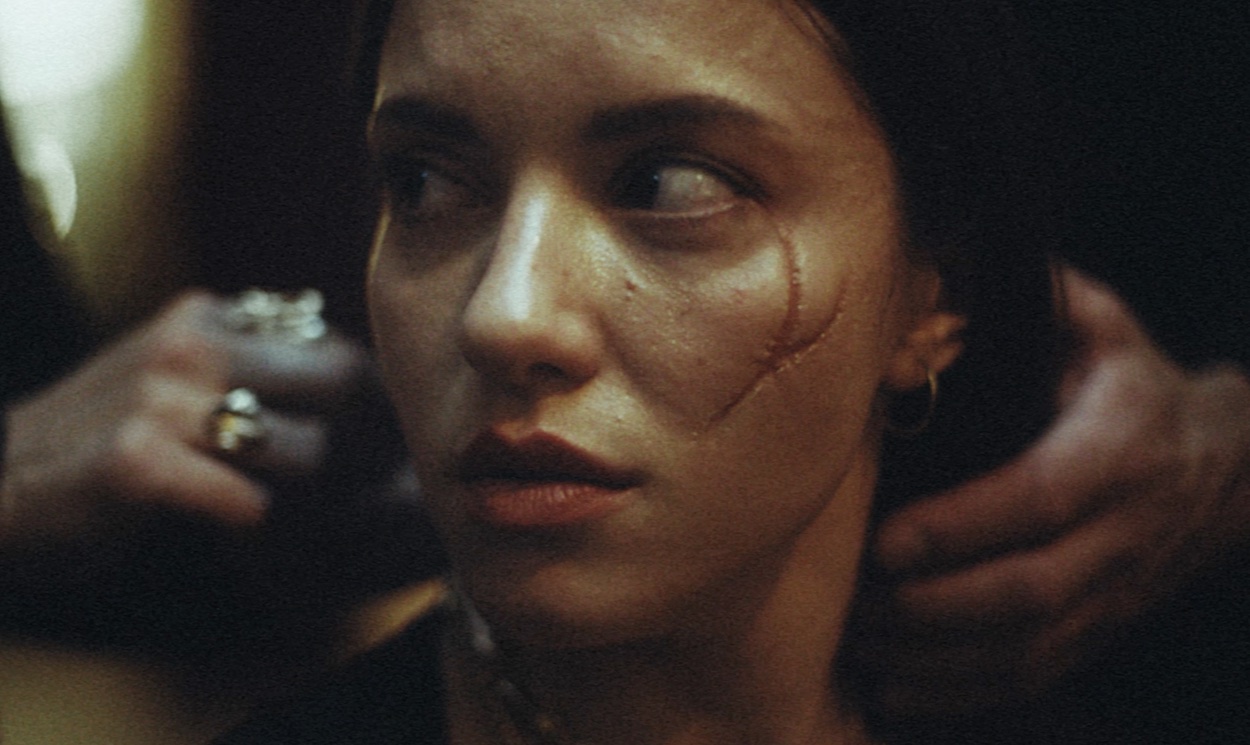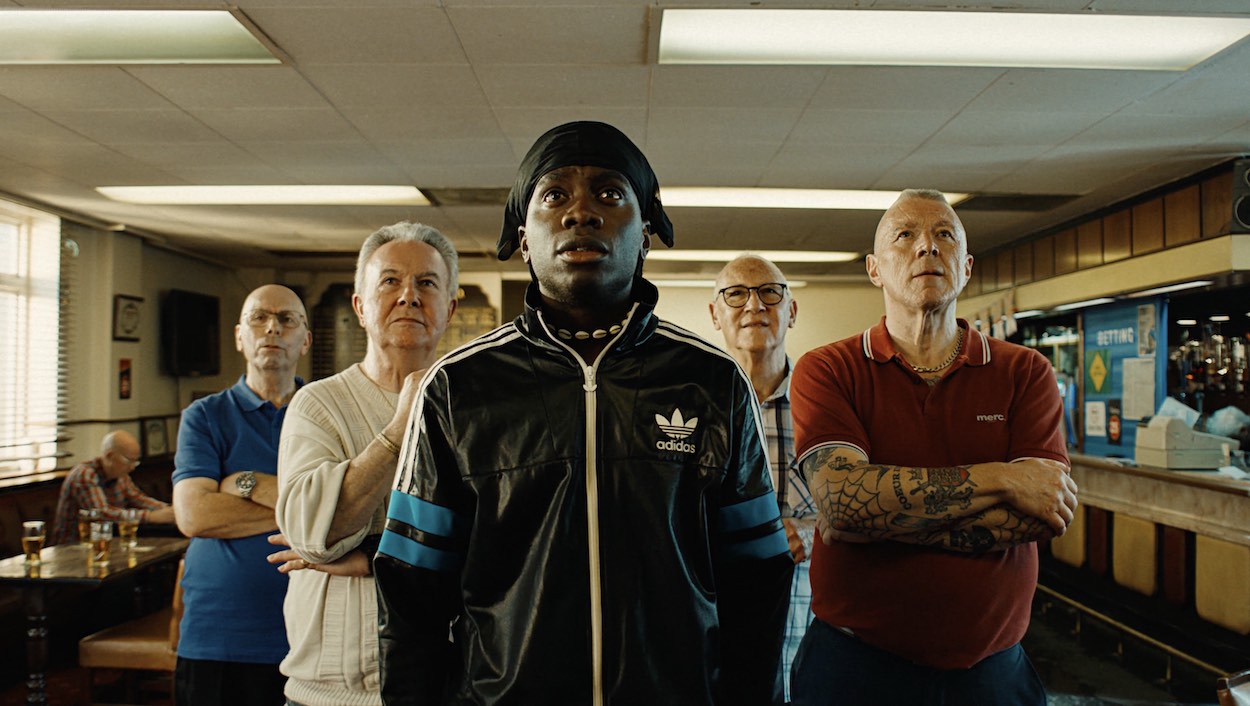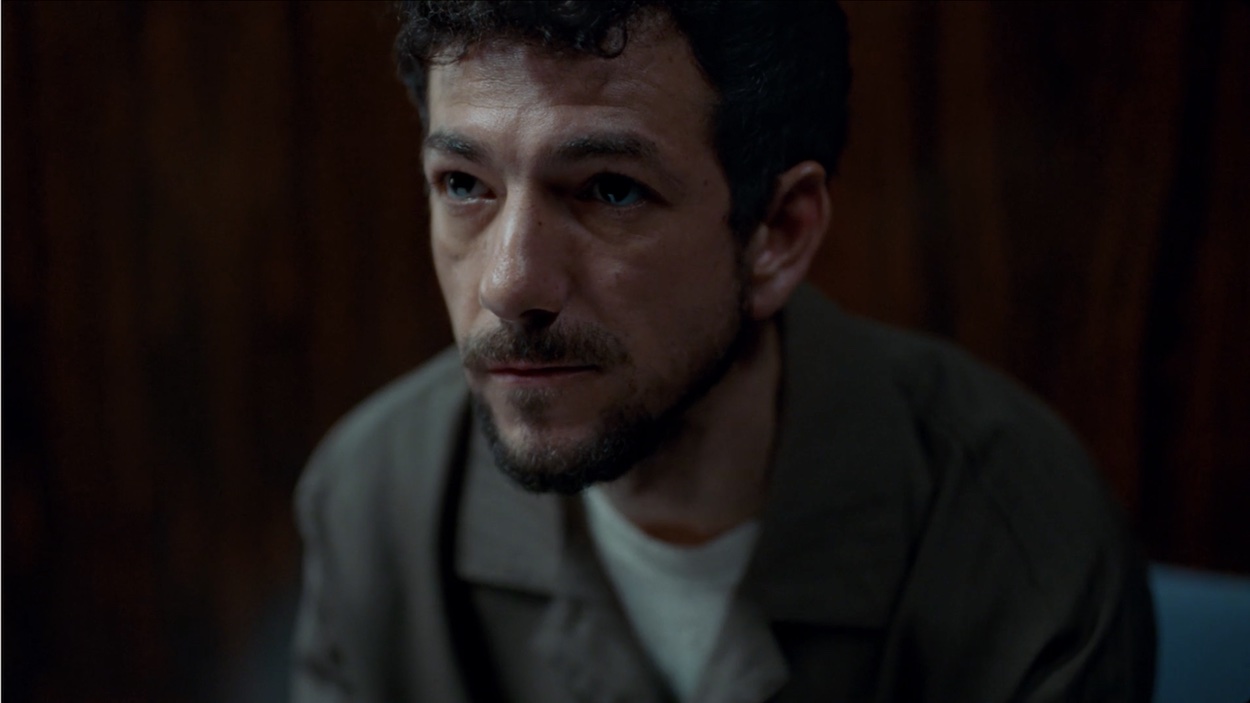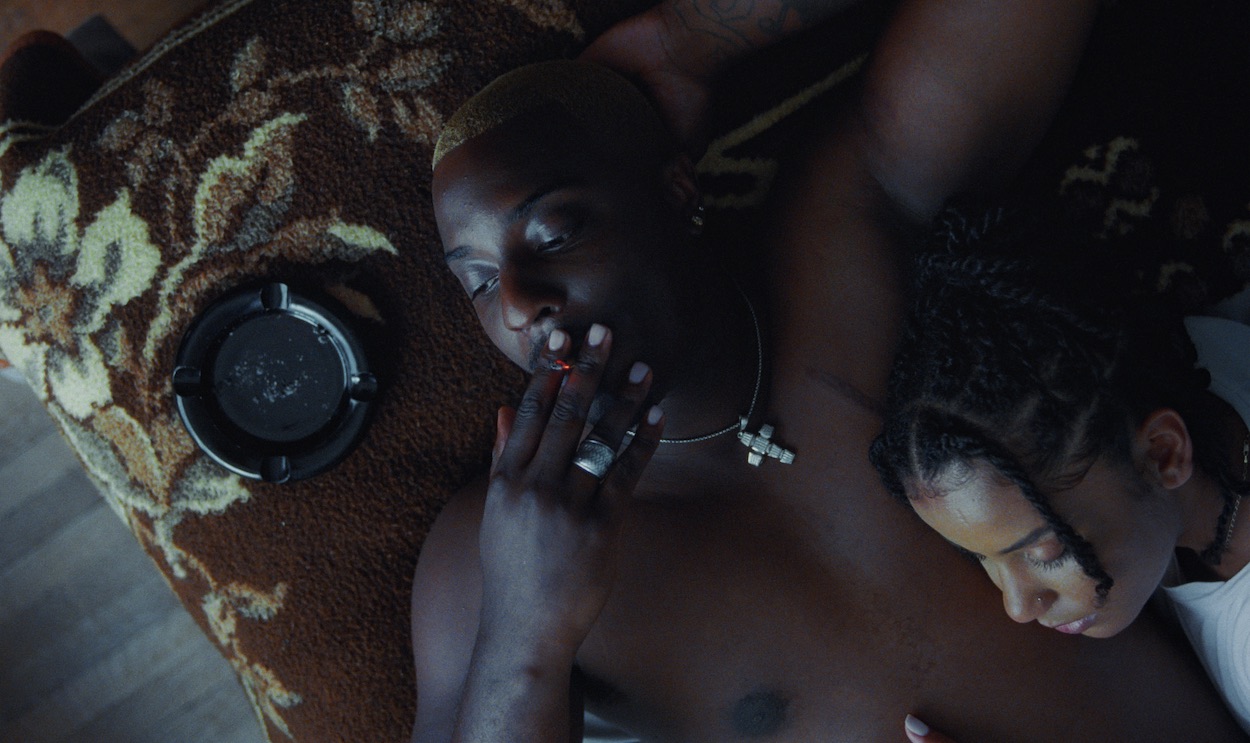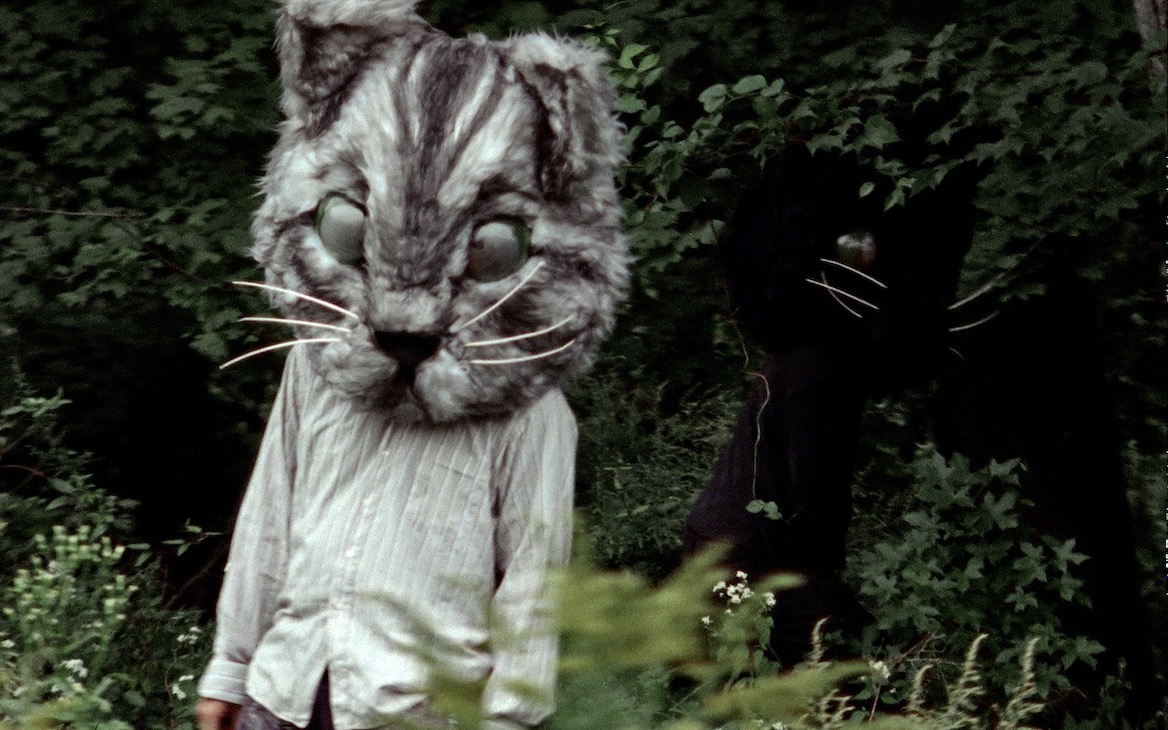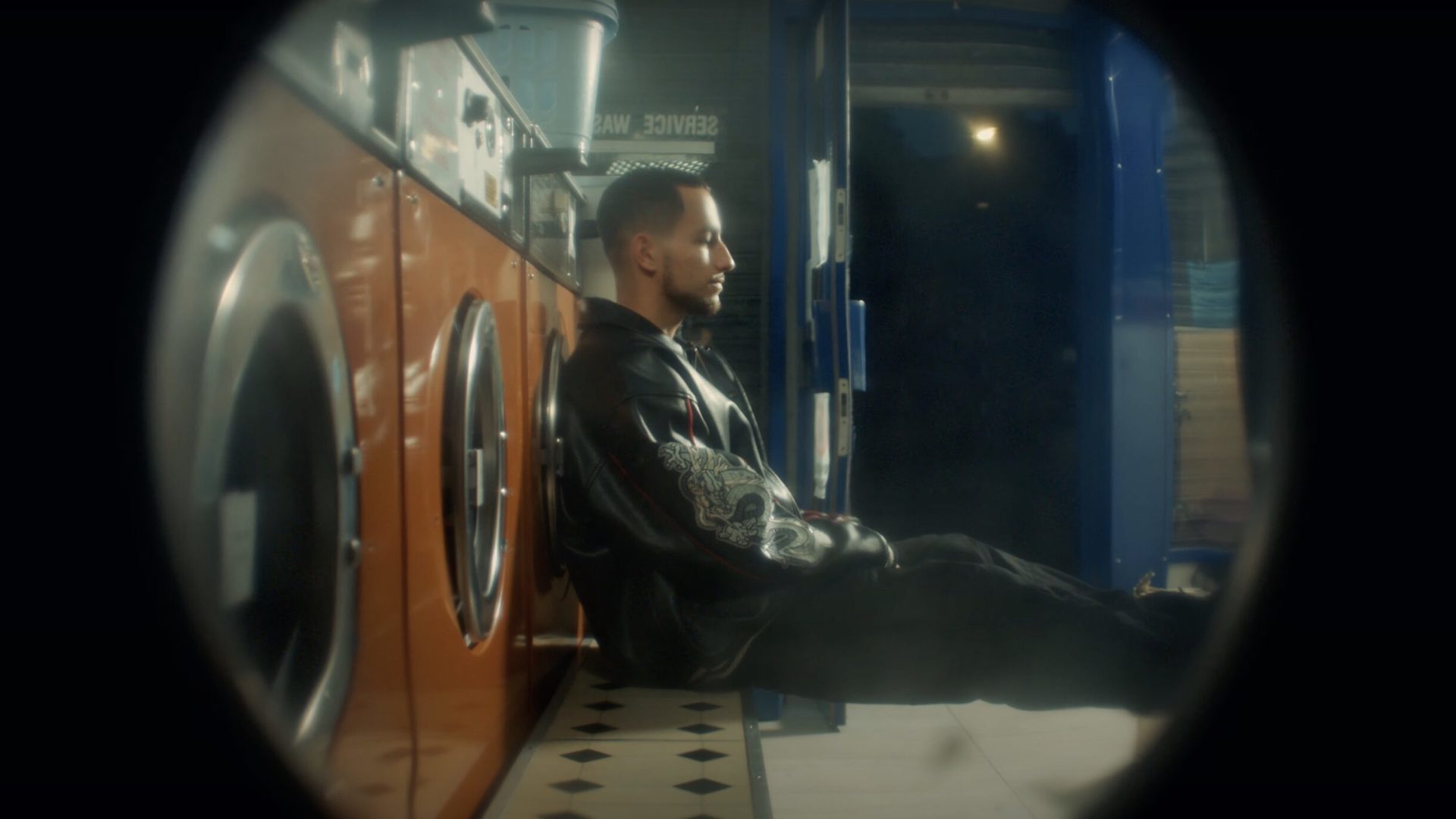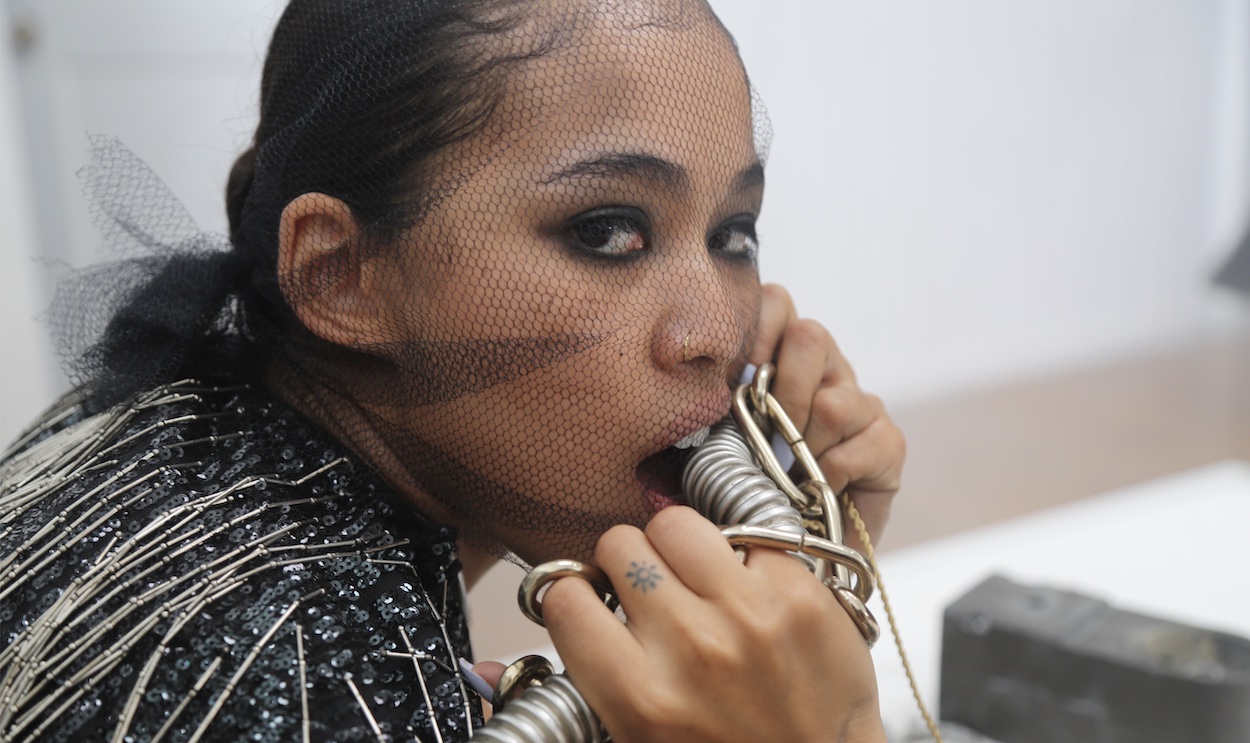Surround sound: all stills taken from Aline Magrez’s video Backbone for MacGray
This is your second music video for the artist MacGray. How did you first meet?
MacGray is actually my brother. So we have known each other for a very long time ! That being said, we have collaborated since I was in INSAS (the cinema school I’ve attended in Brussels) and mostly on my student short film “Parallax”. After that, he composed the music for my first produced short film, “Ligie”, and for “Queerying Nature”, my first feature-length documentary that I’ve just finished. Meanwhile, I directed his music video “Brick and Mortar”. I think that his music and my films really complement each other.
Did the artist have a concept in mind when you came on board to direct the music video?
Because of this long artistic collaboration, MacGray gave me total freedom to direct his music videos. So, I’ve listened to the tracks on the new album (Collapse) and got inspired by Backbone with this idea.
The piece is a wonderful metaphor for how sound can bring the viewer into the world of a film, while your short “Ligie” centres on a deaf woman hearing the real world for the first time. Where does this fascination with sound come from? Does music play a large part of your creative thinking process?
I have always been receptive to sounds and I’ve spent a lot of time analysing them. Because I make a sensitive cinema, where the viewer is immersed in the perception of the main character, trying to give them a glimpse of another reality, sound is just as important as images in the narrative. I think that sound is an amazing tool to tell the inwardness of a character.
So for Backbone, I thought it would be fun to “reverse” it and try to get the viewer to “imagine” the sounds. The work of a foley artist is really fascinating, and when I worked with Céline Bernard for “Ligie”, I was sure I would write something about her line of work one day. I didn’t know at that time it was going to take this form and be so gory !
The music is very important for me, and with MacGray, we collaborate early in the process so the actresses and actors can listen to the tracks specially made for the film while shooting. This way, I can communicate some “emotions” with them in other ways than writing or chatting.
Working with knives, carcasses and blood splatters must have been fun to work with. What challenges did you encounter while shooting?
Except for finding “good” knives and taking care of goat carcasses which are really heavy and stinky, the main artistic challenge was to find the best blood. Because good blood is very expensive, we had to mix them up and decide when to use the beautiful darker one and when to use the cheap one, too red for my taste.
Also, I have to say, it was mostly difficult for the actresses who had to support a large amount of this “sticky” fake blood even though they were wearing shirts, in the middle of a Belgian forest, at the end of December…
Otherwise, it was mostly fun to put blood everywhere. We all felt like kids.
After primarily directing fiction and documentaries, what are you are you enjoying about exploring the music video format?
Because of both constraints of the very short form and the emotions already existing in the tracks, the format of the music video is an amazing lab for me. Because of these constraints, I can allow myself to try different forms that can fit the feeling I have for the music. It is liberating to work on something born outside of myself, then bringing it into my world. In “Brick and Mortar,” I explored the world through Google Earth and challenged myself to long hours of solitude on Avid… In “Backbone”, the horror film came right away. Today, I am currently working on MacGray’s next track, “Orbit”, using A.I. imagery and the skills of 3D artists. I would like to direct more music videos, as I love finding the most suitable form for something that doesn’t come from me originally. Also, like cinema, music is an art of time and it is very natural for these two to intertwine so well.
Growing up in Belgium, what’s your earliest memory of film? What was your path to directing?
One of my first significant memory is watching “Shining” on a Sunday afternoon. At twelve, alone. Probably too young… I really wanted to understand what my older brothers were talking about. I didn’t get it, but I was shocked and frightened for days and days after that. It was the first time I (unconsciously) experienced the power of cinema. The second important shock was way more conscious : it was the work of Belgian director André Delvaux, and the beautiful “Un soir, un train”. At that point, I understood how the art of cinema allowed the viewer to get a sensitive “experience” of singular perceptions of the world, more than only being a medium for stories, and I became obsessed with it. Looking for this sensitive cinema, I fell in love with Southeast Asian directors, such as Hou Hsao Hsien, Hiroshi Teshigahara or Apitchatpong Weerasethakul, who all have experimented with new forms of narrative. Today, I try to explore this form of sensitive cinema in my different projects, which are actually always interrogating the outcast, the different, the one who is experiencing the world with a unique point of view.
Tell us a bit about your feature-length documentary “Queerying Nature”, exploring the impact of Dr Joan Roughgarden’s work on queer relations in the natural world. What drew you to her research?
A biologist, Leonor Palmeira, came to me with a project : spotlighting the fact that the animal world is actually very very queer, and not at all binary as it was told for a long time, and that it took us, the human animals, a long time to talk about it ! I thought right away that the subject was thrilling, and as I was saying about music videos, I love working on something that comes from outside of myself and making it mine. Also, it was a great challenge for me to make a more linear film than I normally do.
Dr Joan Roughgarden’s book, “Evolution’s Rainbow” was one of the first popularizing scientific texts about the subject, so it was natural we began with her, but the film grew and it became a choral film. I co-wrote it with Leonor, then directed it by myself. It was such an exciting research and mostly amazing meetings with various people who demonstrate that we should definitely desire to live in a world full of diversity.
Anything else you’d like to mention? What are you currently working on?
I am currently writing a long-feature film produced by Frakas Productions, preparing a short film with Miles Cinema and beginning a new documentary project.
Interview by Becca Nichols
INFO:
@aline.magrez
@macgray.music
See Aline Magrez short film Ligie here
MacGray, Backbone
Director: Aline Magrez
Director of Photography: Julien Ramirez
Produced by: Tsawa
Actresses: Sarah Lefèvre and Elisabeth Winter
Producers: Samir Dari et Aline Magrez
Executive production: Yann Wauters
1” AD: Adrien Heylen
2” AD: Léo Malek
Gaffer: Charlie Severe
Electricians: Hugo Corson, No Souchaud
Key Grip: Thomas Serckx
Art director: Justine Dely
Art director assistant: Charlotte Hermant
Set manager: Jordan Esser
Assistant set manager: Jeanne Remy
Make up: Gregory Joncret
Costume designer: Sybille Langh
Editor: Aline Magrez
Color Grading: Guillaume Chanaud at Les Films du Périscope
Set: Studio L'Equipe
